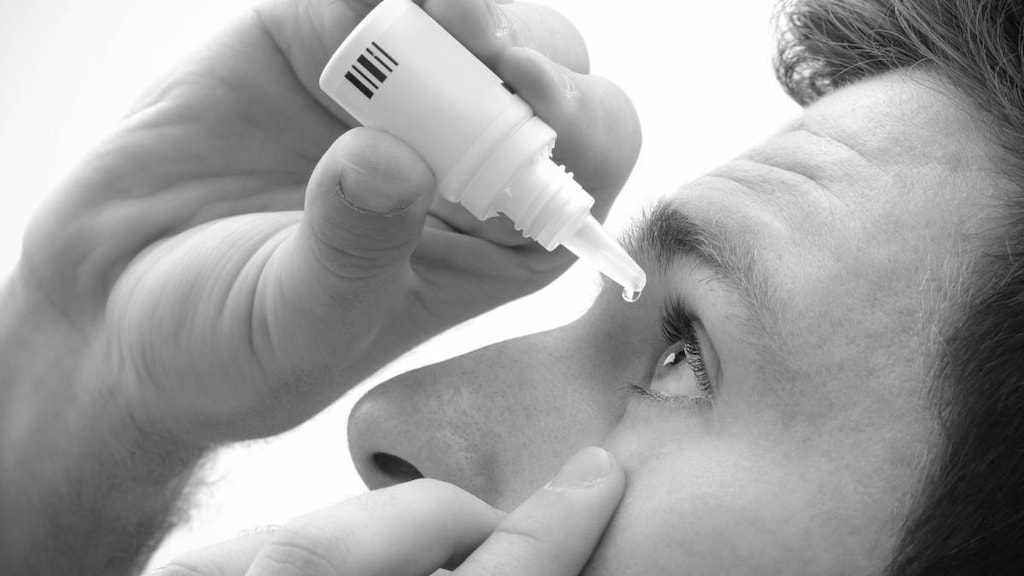Dosage Forms
Excipient information presented when available (limited, particularly for generics); consult specific product labeling.
Solution, Ophthalmic [preservative free]:
Xiidra: 5% (5 ea)
Pharmacology
Mechanism of Action
Lifitegrast binds to the integrin lymphocyte function-associated antigen-1 (LFA-1) and blocks the interaction of LFA-1 with its cognate ligand intercellular adhesion molecule-1 (ICAM-1).
Use: Labeled Indications
Dry eye disease: Treatment of the signs and symptoms of dry eye disease (DED).
Contraindications
Hypersensitivity to lifitegrast or any component of the formulation.
Dosage and Administration
Dosing: Adult
Dry eye disease: Ophthalmic: Instill 1 drop into each eye every 12 hours.
Dosing: Geriatric
Refer to adult dosing.
Dosing: Pediatric
Dry eye disease (DED): Adolescents ≥17 years: Ophthalmic: Instill 1 drop into each eye every 12 hours.
Administration
For topical ophthalmic use only. Remove contact lenses prior to administration and wait 15 minutes before reinserting. Do not touch the eye or surrounding area or any surface with the dropper tip to avoid contamination; discard single use container and unused solution after administration.
Storage
Store at 20°C to 25°C (68°F to 77°F). Store single-use containers in the original foil pouch.
Drug Interactions
There are no known significant interactions.
Adverse Reactions
5% to 25%:
Gastrointestinal: Dysgeusia
Local: Application site irritation
Ophthalmic: Decreased visual acuity
1% to 5%:
Central nervous system: Headache
Ophthalmic: Blurred vision, conjunctival hyperemia, eye discharge, eye discomfort, eye irritation, eye pruritus, increased lacrimation
Respiratory: Sinusitis
Warnings/Precautions
Special Populations:
- Contact lens wearers: Remove contact lens prior to administration and wait 15 minutes before reinserting.
Pregnancy
Pregnancy Considerations
Systemic exposure following ophthalmic administration is low. In general, if ophthalmic agents are needed during pregnancy, the minimum effective dose should be used in combination with punctal occlusion to decrease potential exposure to the fetus (Samples 1988).
Patient Education
What is this drug used for?
- It is used to treat dry eyes.
Frequently reported side effects of this drug
- Eye irritation
- Change in taste
- Blurred vision
Other side effects of this drug: Talk with your doctor right away if you have any of these signs of:
- Signs of a significant reaction like wheezing; chest tightness; fever; itching; bad cough; blue skin color; seizures; or swelling of face, lips, tongue, or throat.
Note: This is not a comprehensive list of all side effects. Talk to your doctor if you have questions.
Consumer Information Use and Disclaimer: This information should not be used to decide whether or not to take this medicine or any other medicine. Only the healthcare provider has the knowledge and training to decide which medicines are right for a specific patient. This information does not endorse any medicine as safe, effective, or approved for treating any patient or health condition. This is only a brief summary of general information about this medicine. It does NOT include all information about the possible uses, directions, warnings, precautions, interactions, adverse effects, or risks that may apply to this medicine. This information is not specific medical advice and does not replace information you receive from the healthcare provider. You must talk with the healthcare provider for complete information about the risks and benefits of using this medicine.

